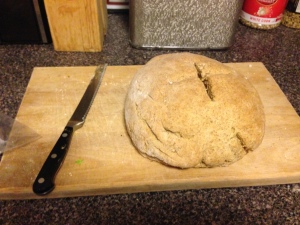I am still alive. I am still hard at work. The semester being over, I have officially taken a headfirst nosedive into dissertation work in hopes that I can turn out a draft of a chapter by January sometime. Things are looking pretty good for this writing schedule (though, I will admit, that’s definitely aided by the fact that I’m writing a chapter about a project which I’ve been working on for two years now).
The problem with working around this time of year is that, inevitably, you’re going to be interrupted for the holidays. We will be leaving to spend Christmas in New York with my family for most of next week, thus meaning that I have to wrap any major work I was doing here before end-of-day on Monday. It’s sometimes tough to balance things like that: you know you need to go deep, but not so deep that you can’t ear-mark it in a place that’s feasible to return to. My research, much like my plants, will need to be glutted with sustenance so that it can self-sustain in my absence.
So I’ve been reading up a storm and ordering ILL books on delay so that I’ll have something to come home to (…other than my awesome bed).
In the meantime, I made the following Hot Cocoa Cookies for our department Holiday gathering. I thought they were incredibly awesome, and I hope you do too! I took the recipe from Rachel Ray but, as usual, cut it in half (her recipe makes 60 cookies… who in their right mind would need to make 60 cookies at a clip!?). Here’s my version, complete with serving suggestions at the bottom.
Ingredients
2 oz. unsalted butter (half a stick)
3 4 oz. bars baking chocolate: two semi-sweet, one bittersweet.
¾ cup flour
1/8 cup unsweetened cocoa powder
¾ tsp. baking powder
1/8 tsp. salt
¾ cup light brown sugar
2 eggs
3/4 tsp. vanilla extract (I tend to use vanilla paste because I find it more flavorful)
15 large marshmallows
Procedure
Chop the semi-sweet chocolate bars into small bits and melt them along with the butter in a saucepan. Stir frequently and melt over medium heat lest you risk scorching the chocolate. When this is good and melty, allow it to cool for about 15 minutes while you do other things.
Whisk together your flour, cocoa powder, baking powder, and salt until the mixture is a uniform color.
Beat the sugar, eggs, and vanilla together (I use an immersion blender for this, but you probably should use an electric mixer if you have one) until the mixture is smooth and consistent. Mix in the cooled chocolate until everything is just blended and an even consistency/color. Slow the mixer down to a low speed and add the flour mixture in at least two batches until everything combines nicely. You don’t want to overwhelm the wet ingredients with the dry (it creates batter lumps if you do), so just add slowly and evenly until everything is nice and mixed.
Allow this to sit at room temperature for about 30 minutes, then shape into dough balls (I use a cookie-baller to do this, but you can also use a tablespoon if you want). These are RICH AND INTENSE, so you don’t want your cookies to be too big.
At this point, I set the dough to chill in the refrigerator overnight. You don’t have to, but it does prevent the cookies from spreading out too much when you bake them. You’ll want to fridge them for at least an hour if you opt for the instant gratification baking.
Preheat oven to 325 degrees and arrange your dough balls on cookie sheets. I line my cookie sheets in parchment paper, but you could also use a Silpat if you have it. I also spray with cooking spray just for extra slippiness and ease of removal upon baking. This recipe yielded 32 cookies for me which went on to two cookie sheets of 16 cookies each.
Bake for about 12 minutes or until the tops of the cookies begin to crack.
While the cookies are baking, cut your marshmallows in half. Take the bittersweet chocolate bar and divide it into 32 small squares. Place one small square on the sticky side of each marshmallow.
When the cookies have hit their crackling stage, pull them from the oven. Insert a marshmallow, chocolate-side down, into each cookie pressing gently to ensure that you’re surrounding the chocolate with almost-baked cookie batter. Once every cookie has a marshmallow hat, put the whole shebang back in the oven for about 4 minutes, or until the marshmallows are a little bit gooey and a little bit golden.
You can garnish with grated chocolate over the top at this point and it does look really pretty! Allow the cookies to cool for about five minutes in the pans before transferring to a cooling rack. I would, honestly, serve these babies warm if at all possible (I’m picky about my marshmallows and only like them when heated to gooey perfection). If you can’t serve them right from the oven, reheat them for a few minutes before putting them out and encourage guests to eat them quickly. Nom.


